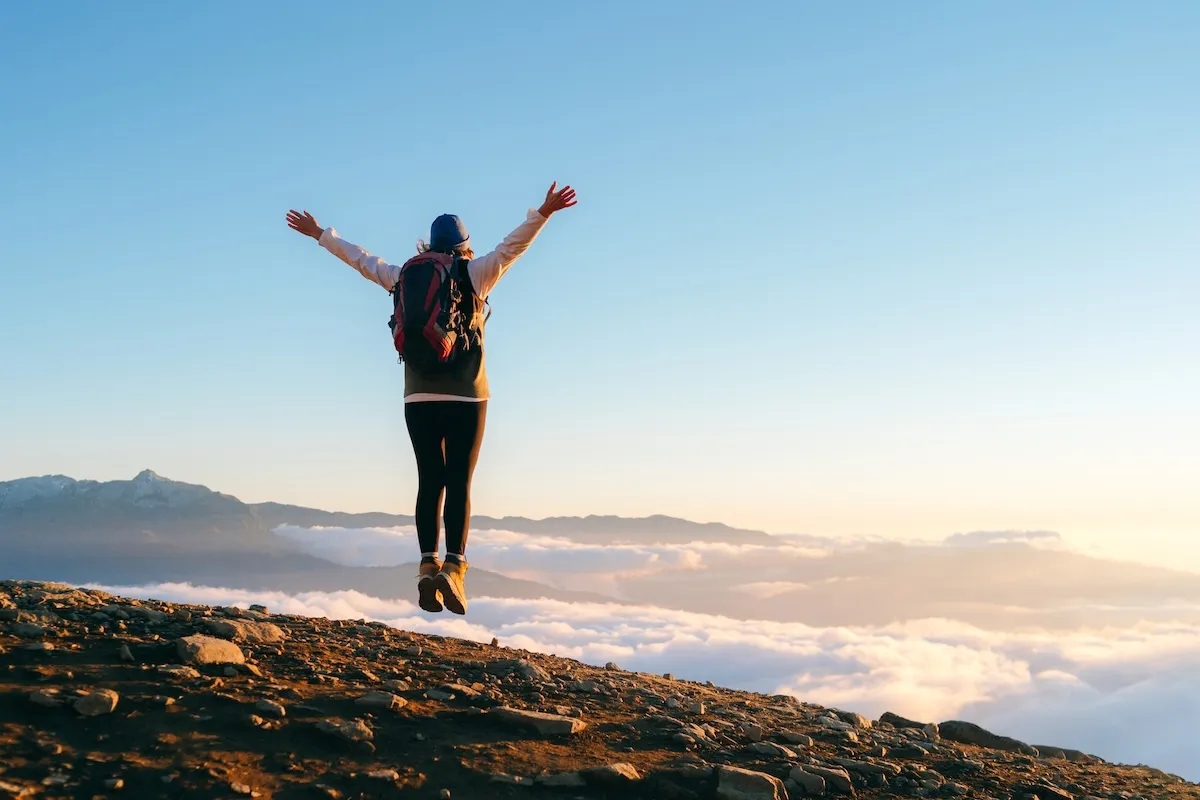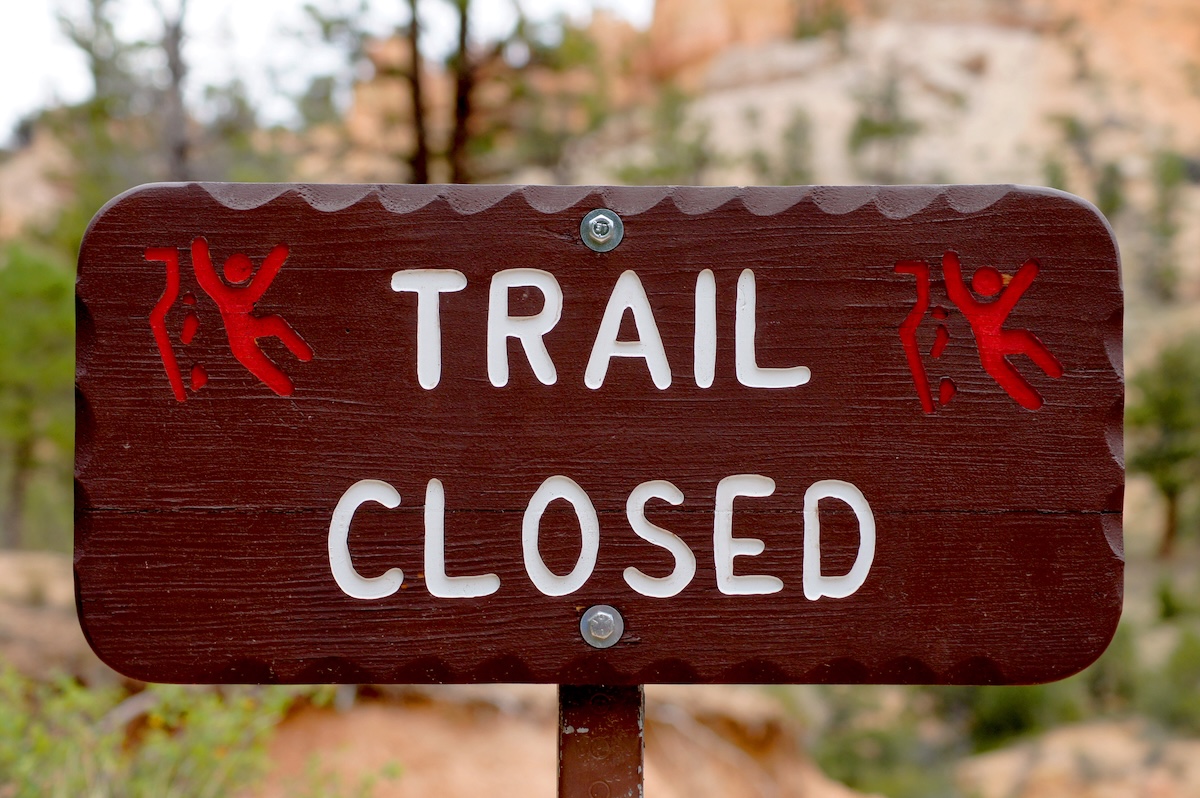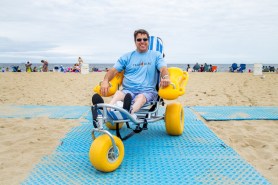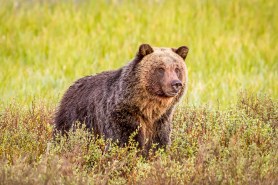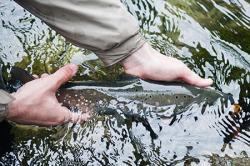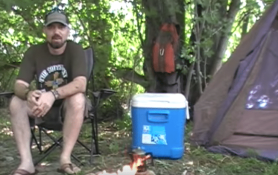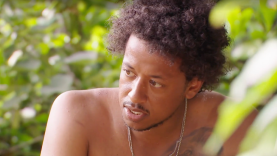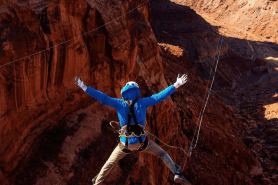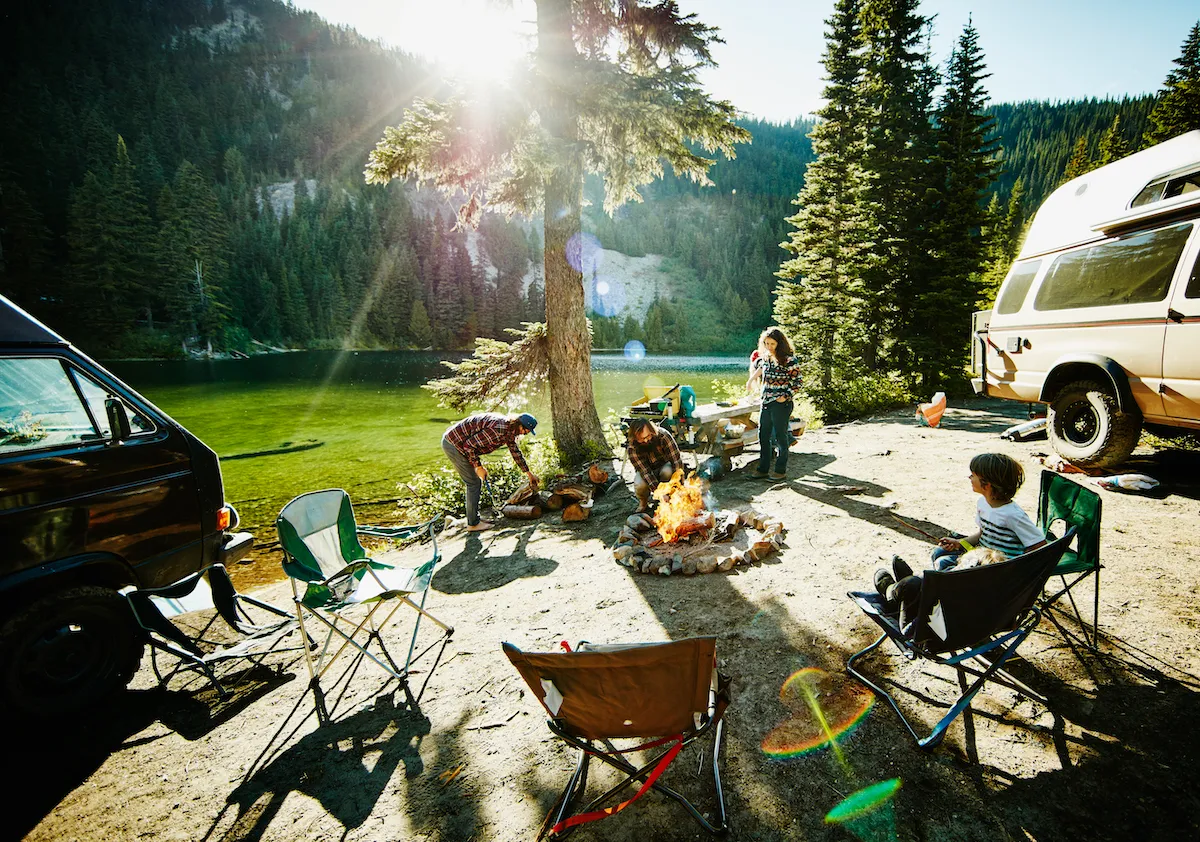

Camping can be divisive — you either love it or you hate it. Some people go once and they never go again while others go every chance they get. When I hear stories about bad camping experiences, the root cause is almost always a lousy campsite.
Videos by Outdoors
Personally, I love a few things more than a retreat to the outdoors. I’ve dedicated a substantial portion of my life to it and thousands of dollars, too. If you include my two five-month backpacking trips, I’ve spent nearly a year of my life living outside. I’ve crawled, sweaty and exhausted, into a tent to enjoy primitive camping in the backcountry and I’ve spent luxurious nights car camping as well.
What I’ve learned in my experience is that any challenge when you’re camping can be addressed with proper preparation. In the words of the late British writer and outdoorsman Alfred Wainwright: “There’s no such thing as bad weather, only unsuitable clothing.”
I would say the same is true with campsites. There’s no bad camping, just poor setups. In this guide for how to set up a campsite, we’ll explore what to look for in a campsite setup, what to bring, and setting it up once you get out there.
What Makes a Good Campsite?
The definition of a “good campsite” will vary depending on who you ask and that’s because there are a variety of different types of camping. One thing everyone can agree on, though, is that the ideal location provides enough space to accommodate your needs so you can rest and relax outdoors safely. For this guide, we’ll focus on campsites for car camping, primitive camping, and RV camping.
Car Camping
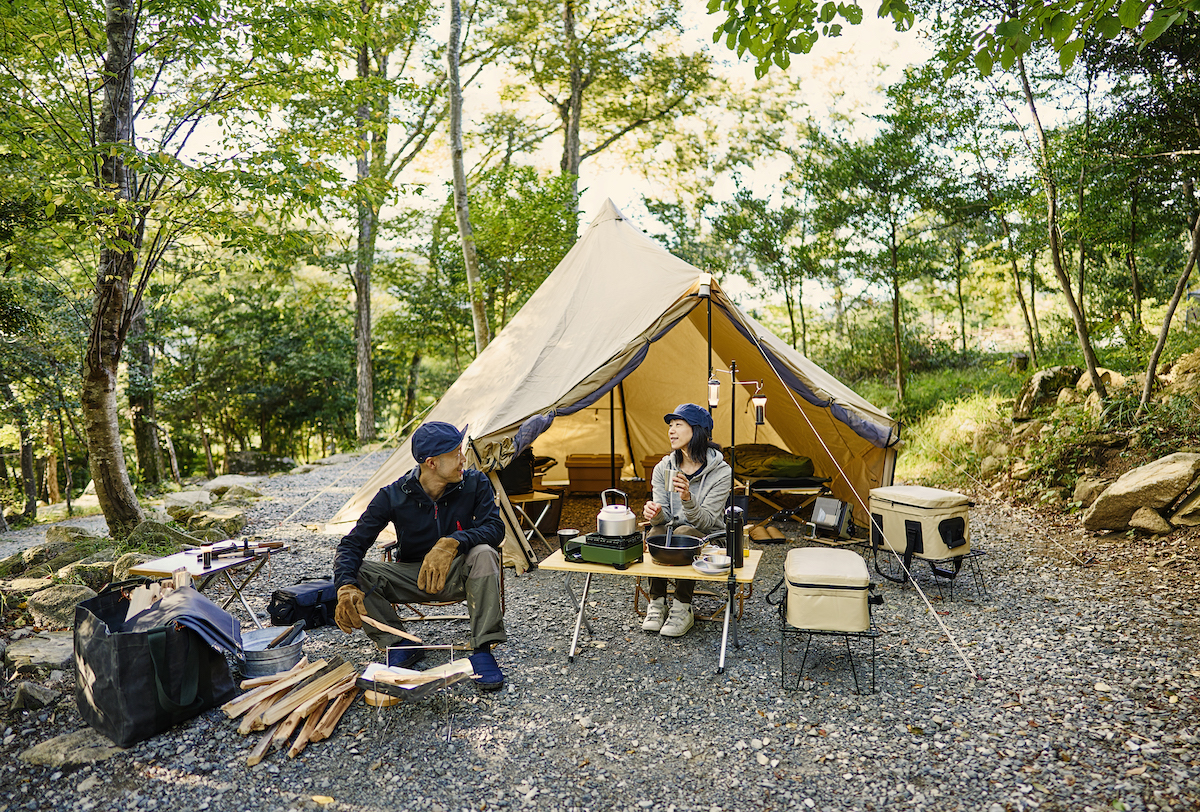
Car camping is perhaps the most common form of camping. From national and state parks to private campgrounds, there are car camping sites all over America. Given the name, you might think it means sleeping in your car with sleeping bags, but car camping actually means camping near or next to your vehicle.
At most campgrounds that offer car camping, you can reserve your spot ahead of time. What you typically get in return is easy access to activities and a lot of accommodations. They include things like a parking space and a small plot to set up your tent, camp kitchen, and lounging area. Also, you’ll generally have access to picnic tables, a fire pit, water pumps, toilets, and/or showers.
Car camping does have some downsides, especially ones that allow you to walk in. Because the sites are so accommodating, they tend to attract a lot of people, including inexperienced outdoorsmen and those who may not understand camp etiquette. When that happens during peak camping season, car camping sites can get crowded and dirty, which can really spoil a trip.
To avoid those issues and other campers, you may want to consider scheduling your trip for off-peak hours or plan for something closer to free camping. Although free camping takes you off the beaten path, you can get a quieter and more solitary experience.
Primitive Camping
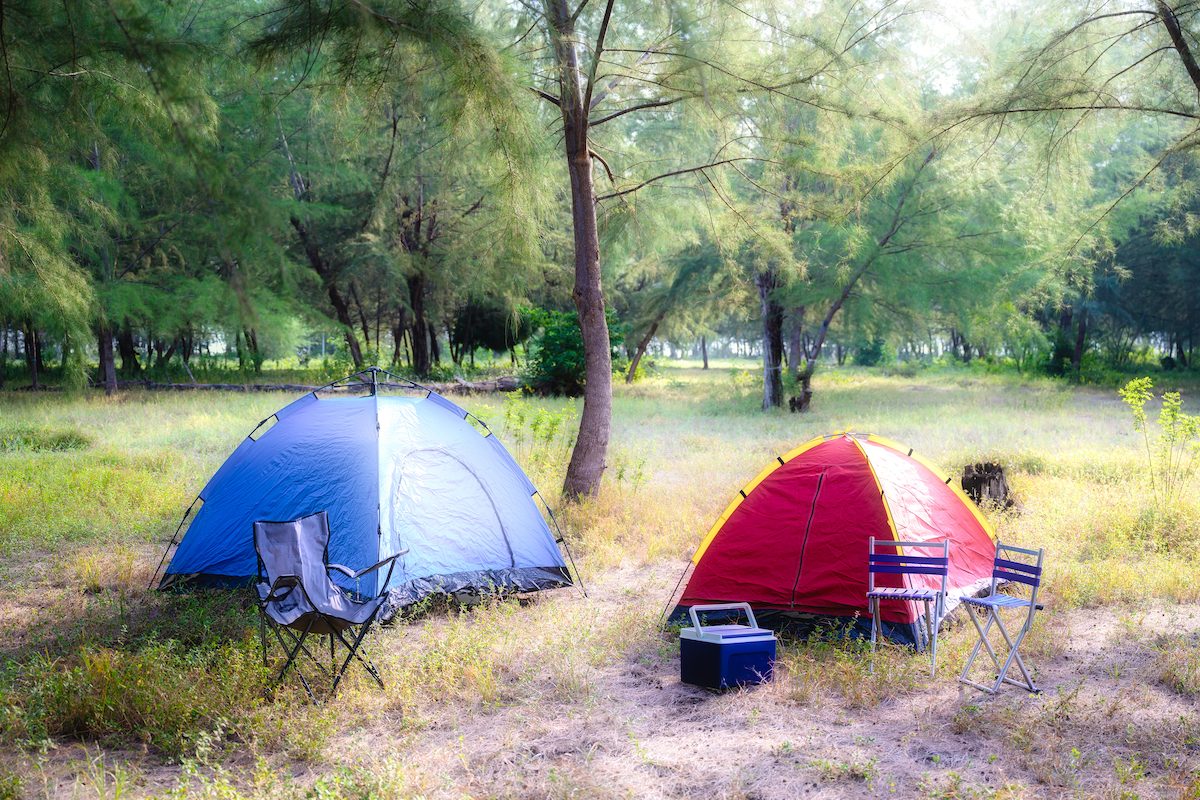
If you hate the idea of reservations, or if you’re more interested in a solitary experience away from other campers, primitive camping — free camping, dispersed camping, backcountry camping, boondocking — is the way to go. The term refers to camping without any modern amenities at all, so it’s just you, your gear, and hopefully some flat ground. Most primitive camping occurs during backpacking, snowmobiling, canoeing, or kayaking trips.
When selecting primitive campsites, you’ll want to look for established sites on durable terrain. This means ground where people frequently camp already. It’s often a clear space free of living vegetation, but you may still have to kick away some rocks and sticks.
While the guidance is practical, it’s also a leave-no-trace practice. The reasoning is just throwing a tent up on grass can disturb delicate ecosystems. Also, you should also try to find a location close to water, but not too close (about 200 feet away).
Additionally, a key safety tip is to avoid camping anywhere near “widow makers,” which are dead trees that are still standing. Should inclement weather come through in the night, they can fall over and seriously harm you.
Also, be mindful of camping in an arroyo, otherwise known as a wash or a gully because heavy rain poses a serious danger there. Lastly, be cautious of exposed ridges or places where rain or wind can come along and ruin your night.
RV Camping
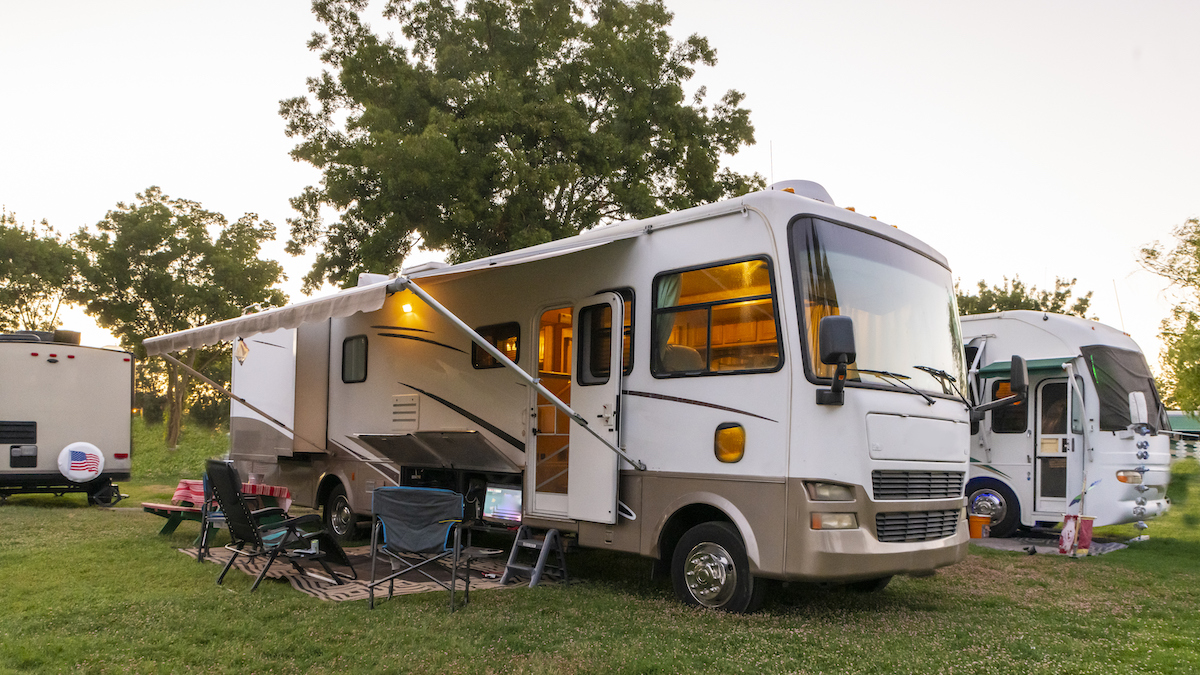
If you’ve got a mobile shelter, most of your campsites will be dictated by where you can park your vehicle. You’ll be able to take advantage of some public land areas so long as the forest roads allow it. RVs are a great way to see a lot of nature in one long road trip. It can save you some effort in using established campgrounds to set up each day, especially if you have small children who won’t be able to help out much. An RV really allows you to focus on the good times.
You’ll often find convenient campgrounds or RV parks with easy access and electrical hookups, perhaps even water and sewage hookups. The cost of staying in such places may be more significant on a summer-long RV road trip, so be sure to balance out the cost with the amenities offered and stretch that budget as far as you can. Some campgrounds will have great playgrounds or natural areas for kids to explore as well.
You’ll be able to tell at a glance if an RV campground you’re considering is too crowded. Loud, inconsiderate neighbors are just as annoying from the inside of your RV. Also, make sure you keep an eye out for surprise charges, parking tow vehicles, or water use where you’re staying.
In short, if the RV park you’re considering doesn’t seem like a good camping experience, you should look for some public lands and try to find an empty campsite with a pit toilet.
How to Layout a Campsite
When you’re planning your camping trip and have a sense of the area and its accommodations, you should start thinking about what camping equipment you’ll need and how to organize it.
Although the layout will, of course, depend on the type of camping you’re doing, in general, you’ll want to organize your campsite much like you would any livable space. You’ll need designated areas for sleeping, cooking and eating, campfire, and using the bathroom.
When you think about a campsite in terms of sections or zones, it becomes much easier to plan. If you’re camping at a popular campground or in an RV, a lot of the accommodations are provided, so you can focus more on the ones that you have to bring yourself.
The Tent
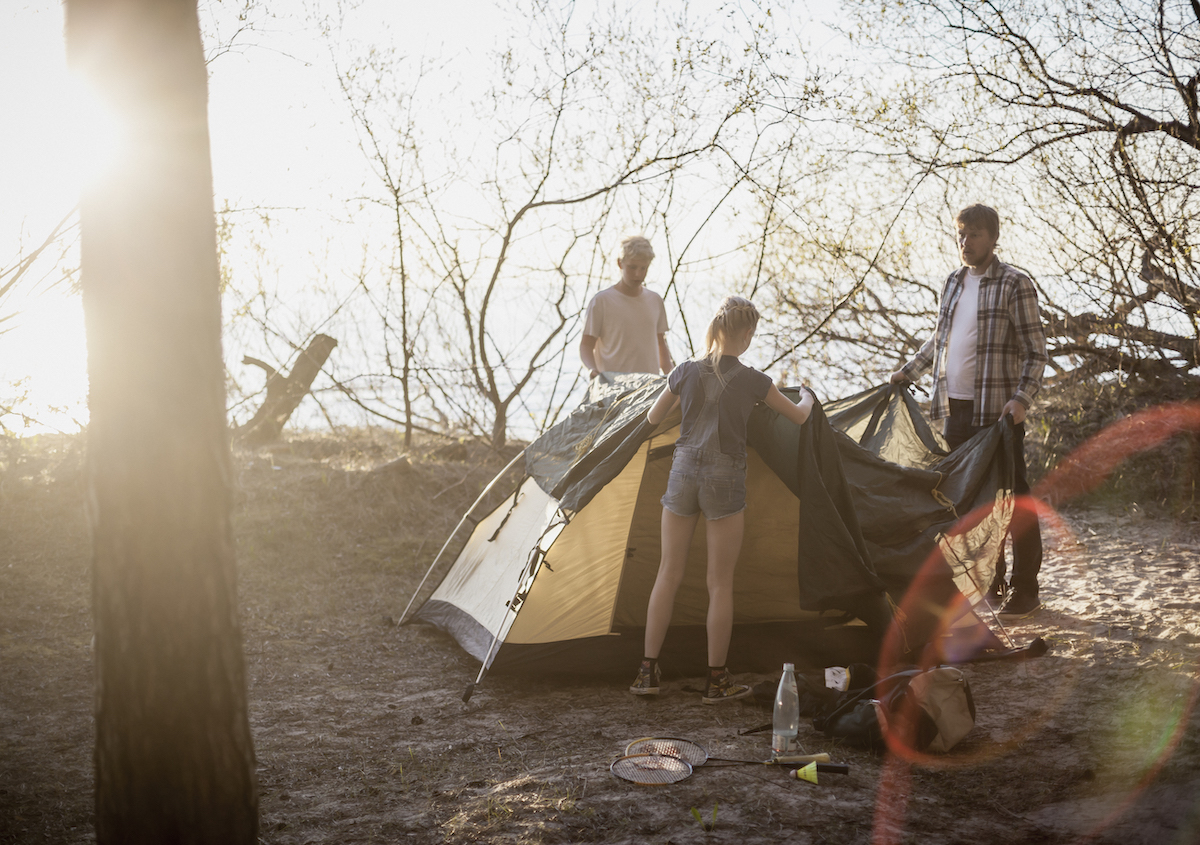
Arranging shelter might be the most important part of setting up your tent at a campsite. It’s your sleeping area and quite possibly find yourself waiting out bad weather. With that said, it should be the first thing you set up when you get to camp because, after a full day of activities, getting your tent up is doubly exhausting. Plus, nothing is worse than trying to set up your tent in the dark of the night.
When Tent Camping
More often than not, you’ll want to set up your tent or two tents on high ground and in the flattest corner of your campsite. That way if it rains, you won’t wake up in a puddle.
You could also set up under a healthy, living tree because the branches and leaves above will provide some extra cover.
And finally, if you’re camping with friends, you should position your tent so the tent door faces the common area, so you get a more communal feel and you can quickly engage with your fellow campers.
Support Your Sleeping Bag
After you pick a spot, there are more steps you can take for additional comfort, such as laying out an extra tarp or sheet of Tyvek to cover your tent footprint. This will help keep your tent floor off the ground, which will, in turn, help keep you warmer and drier when you sleep. And lastly, inside the tent, you should layer the floor with your sleeping pad and then your sleeping bag on top.
Camp Kitchen
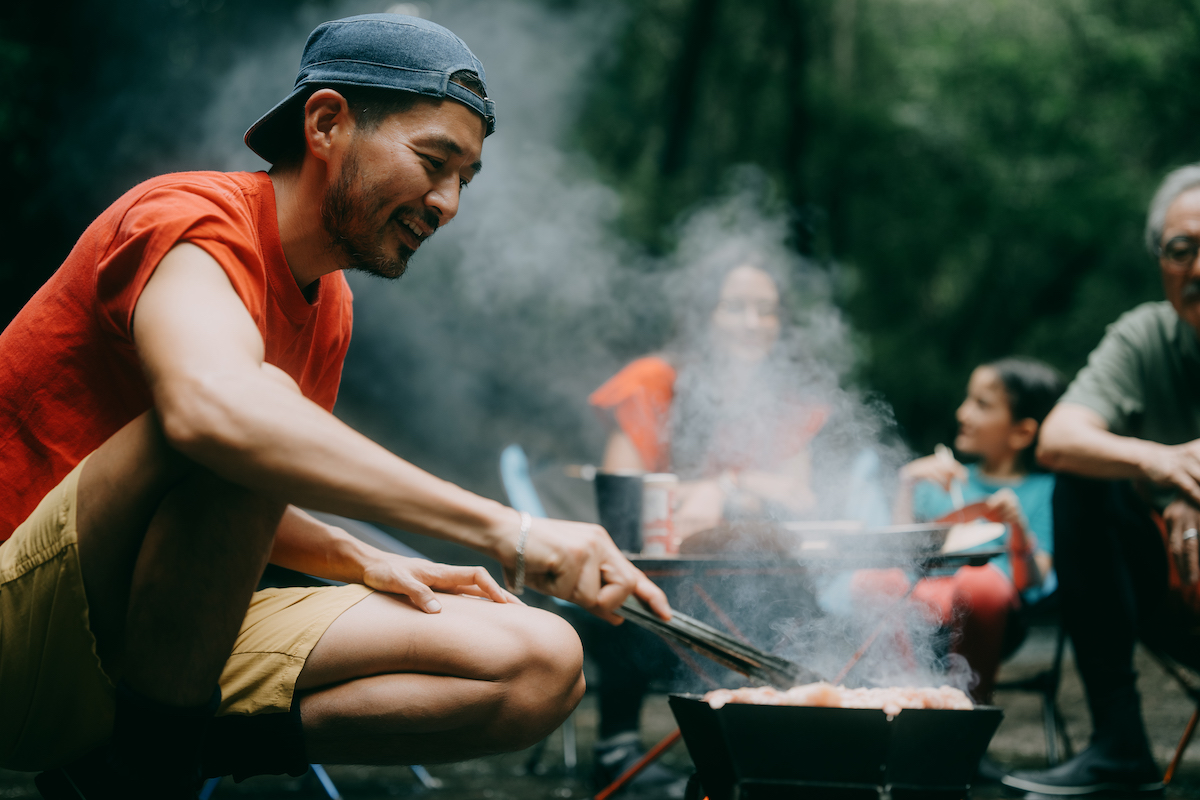
The Picnic Table
When it comes to arranging a place to cook and eat, a picnic table becomes an invaluable resource. To state the obvious, it’s a place where you can prepare, cook, and eat food and store those supplies like your camp stove as well. Of course, if you don’t have a picnic table, you’ll have to make do with what you have.
When in Bear Country
If you’re camping in bear country — grizzly country specifically — your food setup will be different in one important way. Your kitchen area will need to be at least 100 yards away, preferably downwind, from the rest of your camp.
Also, everything in your camp kitchen — all your food, dishes, and cookware — should be stored in a “bear can,” which is a bear-proof cooler, or a bear bag. The purpose of these items is to trap the scent of food, so a bear can’t smell it.
These rules exist not just for your protection, but also for the bear’s protection. If bears and other critters get too dependent on scavenging our campsites, it will eventually lead to more human and wildlife interactions. If that happens, you could be hurt or killed and the animal will most likely be euthanized.
Clean Up After You Eat
Another aspect you should consider is what to do after you eat. Just like at home, you’ll have to clean dishes and dispose of garbage because if you don’t, it’ll attract bugs and animals looking to pick up the scraps.
For the dishes, you could use disposable paper plates and reusable cups and just throw everything away when you’re done. But if you’re in a remote place, you’ll want reusable camping dishes, utensils, and cookware.
To keep everything clean, bring a couple of wash tubs — one for washing and one for rinsing — along with some eco-friendly soap. When you’re done washing dishes, dump the water at least 100 yards away from camp.
And for garbage, you can dispose of it in trash cans if you’re campsite provides them. Otherwise, you should pack it away in trash bags or ziplock bags and then throw it into a trashcan when you’re back in civilization.
Pro-tip: remove all plastic packaging material and anything non-biodegradable before you head out into the great outdoors.
The Campfire
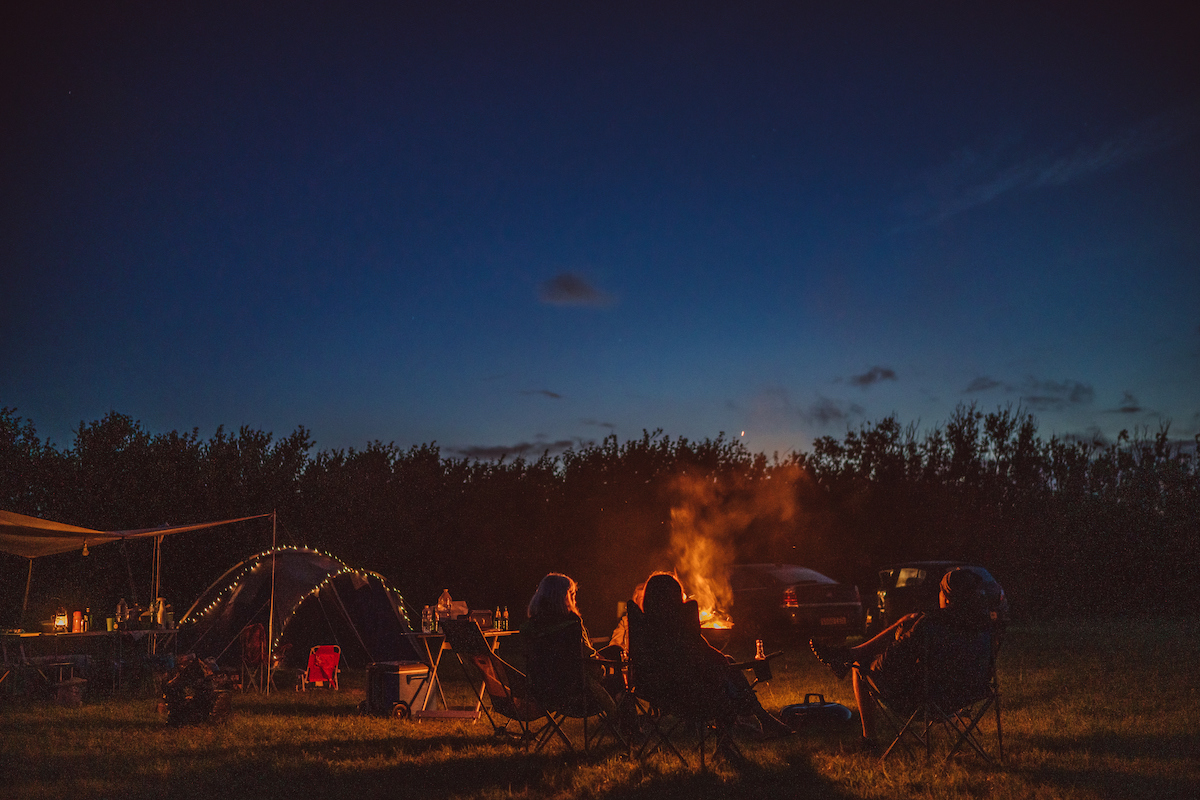
When I say “campfire,” you probably already have an image in your mind. A bunch of people sitting in camping chairs around a roaring campfire telling stories and jokes and just sharing the moment. It’s hands-down the best part about camping.
Whether you do it with a bag of marshmallows, a beer in hand, or a bottle of water, it feels more special around a fire. Yet, while it’s easy to get excited about a campfire, there are rules to follow so you do it safely.
The first rule is if you’re at an established campsite with a fire ring, use it. It’s an area pre-determined by the managers of the campground and/or campers ahead of you. And, assuming you also comply with the second rule, it has endured the test of time.
Second, keep flammable objects — like your tent, sleeping bag, other gear, and any vegetation — at least 15 feet away from the fire pit. You should also figure out the wind direction, so you can position your gear upwind.
Outdoor Bathroom
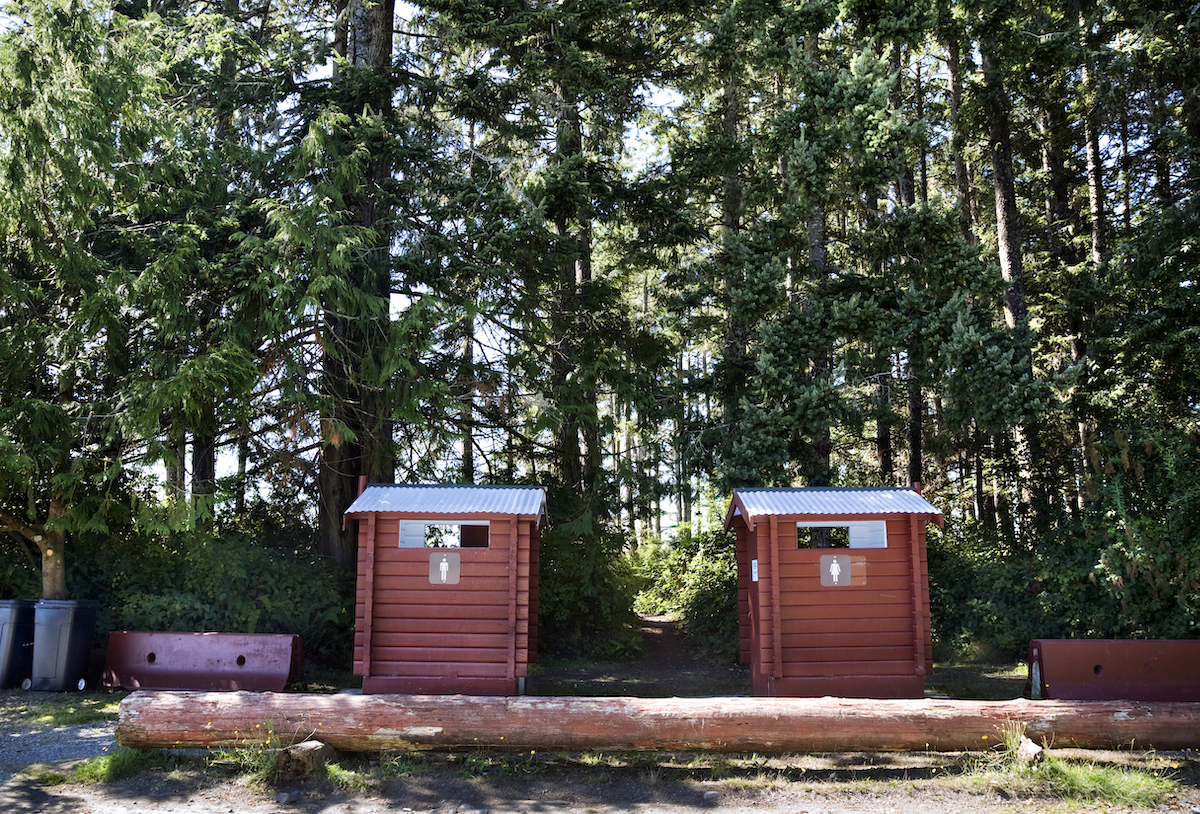
This section only really applies to primitive campsites as most car camping and RV camping sites have some kind of facility to poop and pee.
According to Leave No Trace principles, you should relieve yourself about 200 feet away from an area where humans congregate or travel, and 200 feet away from a water source.
If you have to pee, experts recommend that you urinate on a hard surface like a rock and/or pine needles. That way it won’t soak into the vegetation and attract salt-craving animals.
And if you have to poop, you should either bag it up or bury it six- to eight inches under the dirt. The reason is you don’t want animals to sniff out your waste, eat it, and possibly contract some disease.
Personalize Your Camping Trip
The point of learning how to really set up camp at a campsite is to do things safely and give yourself some level of comfort. However, when you’re out camping, you should bring the right gear along with at least one item just because you want to. We call these “luxury items.”
This item can be anything from a guitar to an easel and some paints to a frisbee. Whatever you want, really. The point is to learn how to set up a campsite and do it correctly and then make it your own.
Get Out There
Don’t be intimidated by setting up camp. While it can be a stressful process, it’s only stressful until you get the hang of it. After your first couple of times, you’ll begin to take joy in the process.
Each campsite is slightly different, so this setup process is also an act of creation. Just break it down and take it step by step. You only need food, water, and shelter to stay alive, but staying warm in your tent on a cold night makes you feel like you’re really living.
I’ve tried to be comprehensive in this guide, but if there’s anything I’m missing, please leave a comment about your favorite tips and tricks for setting up camp. The outdoors and the outdoor community always have more to teach us.
